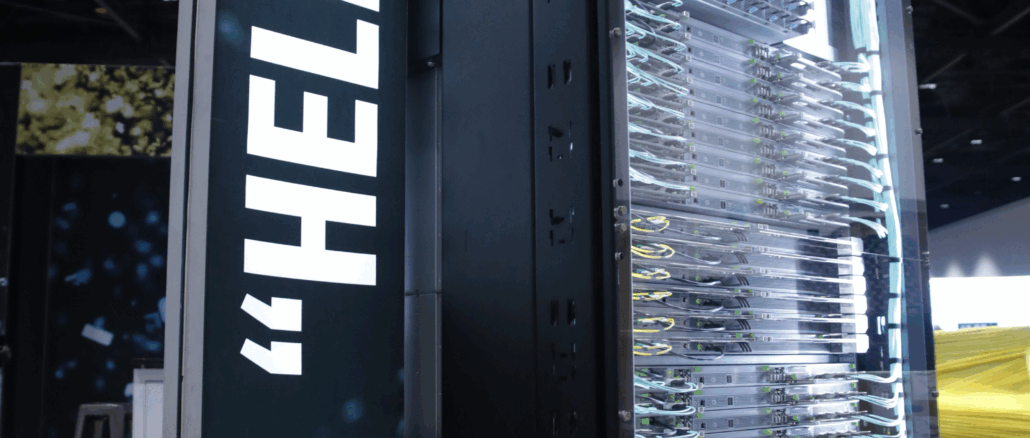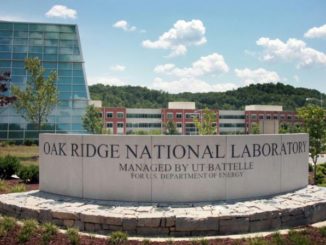
If all goes according to the high end of plan, then AMD should kiss $10 billion in revenues in the fourth quarter of this year, and if it was low-balling that number a little, then it should break through $10 billion and put the wrap on a $34.3 billion year that was its best year ever and its most profitable one in terms of absolute dollars and one of its better ones for net income as a share of revenue. (But not its best.)
Next week, AMD will be hosting its annual Financial Analyst Day in New York, , and it might even give more guidance for Q4 2025. Lisa Su, the company’s chief executive officer, will certainly talk more about how 2026 and 2027 might turn out as the GenAI boom goes from chemical to nuclear, and she said on a call with Wall Street analysts going over the Q3 2025 financial results that AMD will be updating its AI total addressable market upwards. We will have to wait a week to see, and in the meantime make do with the data we have about the third quarter.
The good news for AMD in the datacenter is that both Epyc CPU and Instinct GPU sales are on the rise, and because there is a certain amount of pent up general purpose server demand at the hyperscalers and cloud builders and expanding interest among enterprises in AMD datacenter processors, CPU revenues actually grew faster than GPU revenues. Which is something of a feat in this GPU-crazed world. But, according to Su, the “Turin” Epyc 9005 processors, announced a year ago, are ramping sharply with more cores and higher average selling prices while at the same time the prior generation “Genoa” 9004 processors are holding up and selling perhaps better than AMD would have thought.
At the same time, the “Antares” Instinct MI300X GPUs are still selling well, especially among cloud builders are hyperscalers looking to run AI inference, and the MI325X and its follow-on is ramping with the MI355X has been shipping for a few months and will ramp through the first half of 2026.
Let’s put some numbers on this.
In the third quarter, AMD posted $9.25 billion in sales, up 35.6 percent and up 20.3 percent sequentially. Operating income rose by 61.6 percent to $1.17 billion and net income rose by 61.2 percent to $1.24 billion after some accounting benefits.
AMD existed the quarter with $7.24 billion in cash and equivalents, and Su said on the call that AMD had finalized its deal with contract manufacturer Sanmina to buy the server manufacturing arm of its $4.9 billion acquisition of ZT Systems. Sanmina is paying $3 billion for the business, which has factories in New Jersey and Texas, and becomes the preferred manufacturer of rackscale systems based on its “Helios” double-wide racks, which are also becoming an Open Compute Project standard. AMD bought ZT Systems back in August 2024 to gain 1,100 system engineers and architects, which have been added to the 500 such people AMD had. That $3 billion gain will boost the books in Q4 and beyond, and includes a $2.55 billion bag of cash and $450 million in Sanmina equity that is tied to how much business AMD brings to it.
AMD’s Data Center group has been the largest operating unit for the chip designer and now system designer for the past nine quarters, and the sales of CPUs and GPUs, as well as DPUs and a smattering of FPGAs widened that gap between datacenter and client devices even more.
While datacenter products are the biggest group, it is important to realize that, unlike rival Nvidia, the other parts of AMD are still, collectively, larger than the Data Center group. If Nvidia is any guide, that could change for AMD within the next 18 to 24 months, depending on how solid the deals AMD has lined up with OpenAI and others turn out to be.
In the third quarter, the Data Center group had $4.34 billion in sales, up 22.3 percent year on year and up 34 percent sequentially. Operating income was $1.07 billion, which worked out to 24.7 percent of revenues.
AMD does not break out Epyc CPU and Instinct GPU revenues, but has given us enough hints to build a model over the years. We reckon that Epyc CPUs drove $2.17 billion in sales, an increase of 23 percent over the year ago period. We think that $1.61 billion of that went to the hyperscalers and clouds, who have been early an enthusiastic supporters of AMD Epyc CPUs for several generations now. We think further that enterprises, telcos, academia, government, and other service providers drove $561 million in Epyc CPU sales, up 18 percent. If you take out $120 million in DPU sales and $65 million in datacenter FPGAs, that leaves just a tad under $2 billion in Instinct GPU sales in the quarter, up 20.7 percent year on year.
Next year could be the year when datacenter GPU sales outpace datacenter CPU sales for the first time and never goes back. A lot will depend on how customers aside from the US government and OpenAI deploy the Helios racks and the MI430X and MI450 GPU accelerators, which will sport a new compute architecture and which will give Nvidia a run for the money. Su reiterated on the call with Wall Street that these products lay the foundation for “well over $100 billion in revenues over the next few years.”









Be the first to comment